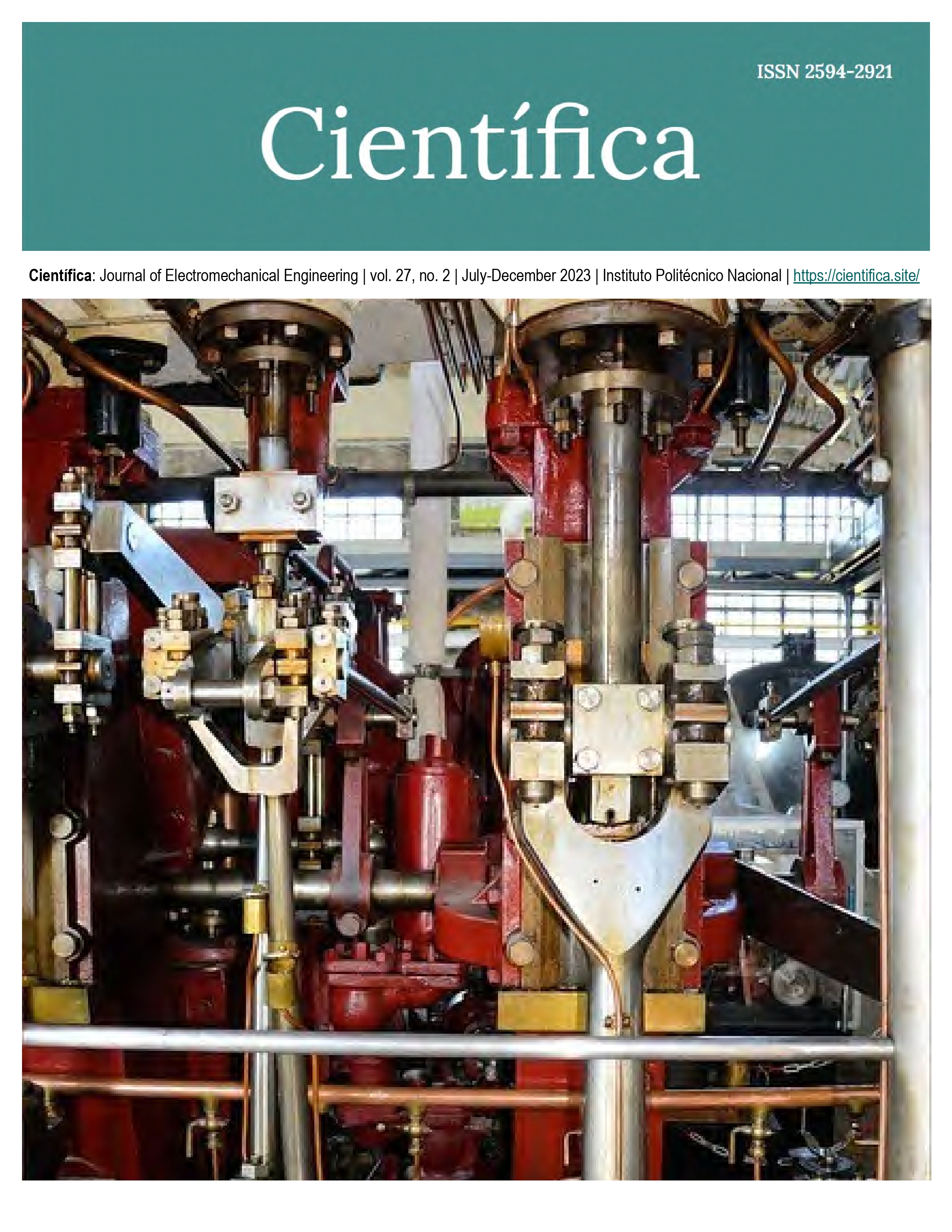Design of shell-based honeycomb structures armadillo for a light helicopter
DOI:
https://doi.org/10.46842/ipn.cien.v27n2a05Keywords:
crashworthiness, honeycomb, finite element methodAbstract
Currently the application of biological patterns within the design of mechanical systems is increasing due to its evolutionary success. In this sense, after millions of years of evolution, nature has provided optimized structures for living beings to ensure their survival in the face of climatic changes or predators. Based on the above, this article describes the design and numerical evaluation of honeycomb-type structures based on the shell of an armadillo. The structures were built with 6063-T5 aluminum and evaluated through comprehension tests using Abaqus finite element software. During the study special emphasis was placed on the cross-sectional design of the structures and its effect on impact resistance. In this sense, five different structures with polygonal and triangular patterns were designed. According to the results obtained, the structure with a hexagonal/circular base showed a better performance in terms of crushing force efficiency (CFE) with a value of 0.78 - the above was confirmed by obtaining an equal specific energy absorption value. at 20.59 J/r. Finally, with the findings found, an energy absorption panel was designed for a light aircraft.
References
X. Yang, J. Ma, D. Wen, J. Yang, “Crashworthy design and energy absorption mechanisms for helicopter structures: A systematic literature review,” Prog. Aerosp. Sci., vol. 114, no. 100618, p. 100-618, 2020
J. Fu, Q. Liu, K. Liufu, Y. Deng, J. Fang, Q. Li, “Design of bionic-bamboo thin-walled structures for energy absorption,” Thin-Walled Struct., vol. 135, pp. 400–413, 2019.
P. Hao, J. Du, “Energy absorption characteristics of bio-inspired honeycomb column thin-walled structure under impact loading,” J. Mech. Behav. Biomed. Mater., vol. 79, pp. 301–308, 2018.
P. Astori, M. Zanella, M. Bernardini, “Validation of numerical models of a rotorcraft crashworthy seat and subfloor,” Aerospace, vol. 7, no. 12, p. 174, 2020.
V. F. González-Albuixech, M. Rodríguez-Millán, T. Ito, J. A. Loya, M. H. Miguélez, “Numerical analysis for design of bioinspired ceramic modular armors for ballistic protections,” Int. J. Damage Mech., vol. 28, no. 6, pp. 815–837, 2019
J. Paz, L. Romera, J. Díaz, “Crashworthiness optimization of aircraft hybrid energy absorbers enclosing honeycomb and foam structures,” AIAA J., vol. 55, no. 2, pp. 652–661, 2017.
Q. He, D. Ma, Z. Zhang, L. Yao, “Crushing analysis and crashworthiness optimization design of reinforced regular hexagon honeycomb sandwich panel,” Sci. Eng. Compos. Mater., vol. 23, no. 6, pp. 625–639, 2016.
K. M. Park, K. S. Min, Y. S. Roh, “Design optimization of lattice structures under compression: study of unit cell types and cell arrangements,” Materials, vol. 15, no. 1, 97, 2022.
S. E. Sadiq, S. H. Bakhy, M. J. Jweeg, “Crashworthiness behavior of aircraft sandwich structure with honeycomb core under bending load,” IOP Conf. Ser. Mater. Sci. Eng., vol. 881, no. 1, p. 012046, 2020.
D. Hu, Y. Wang, B. Song, L. Dang, Z. Zhang, “Energy-absorption characteristics of a bionic honeycomb tubular nested structure inspired by bamboo under axial crushing,” Compos. B Eng., vol. 162, pp. 21–32, 2019.
T. Yan, J. Wang, “Crashworthy component design of an ultra-light helicopter with energy absorbing composite structure,” Procedia Eng., vol. 80, pp. 329–342, 2014.
S. A. Galehdari, H. Khodarahmi, “Design and analysis of a graded honeycomb shock absorber for a helicopter seat during a crash condition,” Int. J. Crashworthiness, vol. 21, no. 3, pp. 231–241, 2016.
Q. Chen, N. M. Pugno, “Bio-mimetic mechanisms of natural hierarchical materials: a review,” J. Mech. Behav. Biomed. Mater., vol. 19, pp. 3–33, 2013.
H. Yin, X. Wang, G. Wen, C. Zhang, W. Zhang, “Crashworthiness optimization of bio-inspired hierarchical honeycomb under axial loading,” Int. J. Crashworthiness, vol. 26, no. 1, pp. 26–37, 2021.
X. Niu, F. Xu, Z. Zou, T. Fang, S. Zhang, Q. Xie, “In-plane dynamic crashing behavior and energy absorption of novel bionic honeycomb structures,” Compos. Struct., vol. 299, no. 116064, p. 116064, 2022.
D. Hu, Y. Wang, B. Song, L. Dang, Z. Zhang, “Energy-absorption characteristics of a bionic honeycomb tubular nested structure inspired by bamboo under axial crushing,” Compos. B Eng., vol. 162, pp. 21–32, 2019
J. St. John, “File: Dasypus novemcinctus (nine-banded armadillo) 1 (15543283797).jpg,” Wikimedia.org [Online].Available:https://commons.wikimedia.org/wiki/File:Dasypus_novemcinctus_%28ninebanded_armadillo%29_1_%2815543283797%29.jpg. [Accessed: 29-Dec-2022].
N. Qiu, Y. Gao, J. Fang, Z. Feng, G. Sun, and Q. Li, “Crashworthiness analysis and design of multi-cell hexagonal columns under multiple loading cases,” Finite Elem. Anal. Des., vol. 104, pp. 89–101, 2015
Downloads
Published
Issue
Section
License
Copyright (c) 2023 Instituto Politecnico Nacional

This work is licensed under a Creative Commons Attribution-NonCommercial-ShareAlike 4.0 International License.

